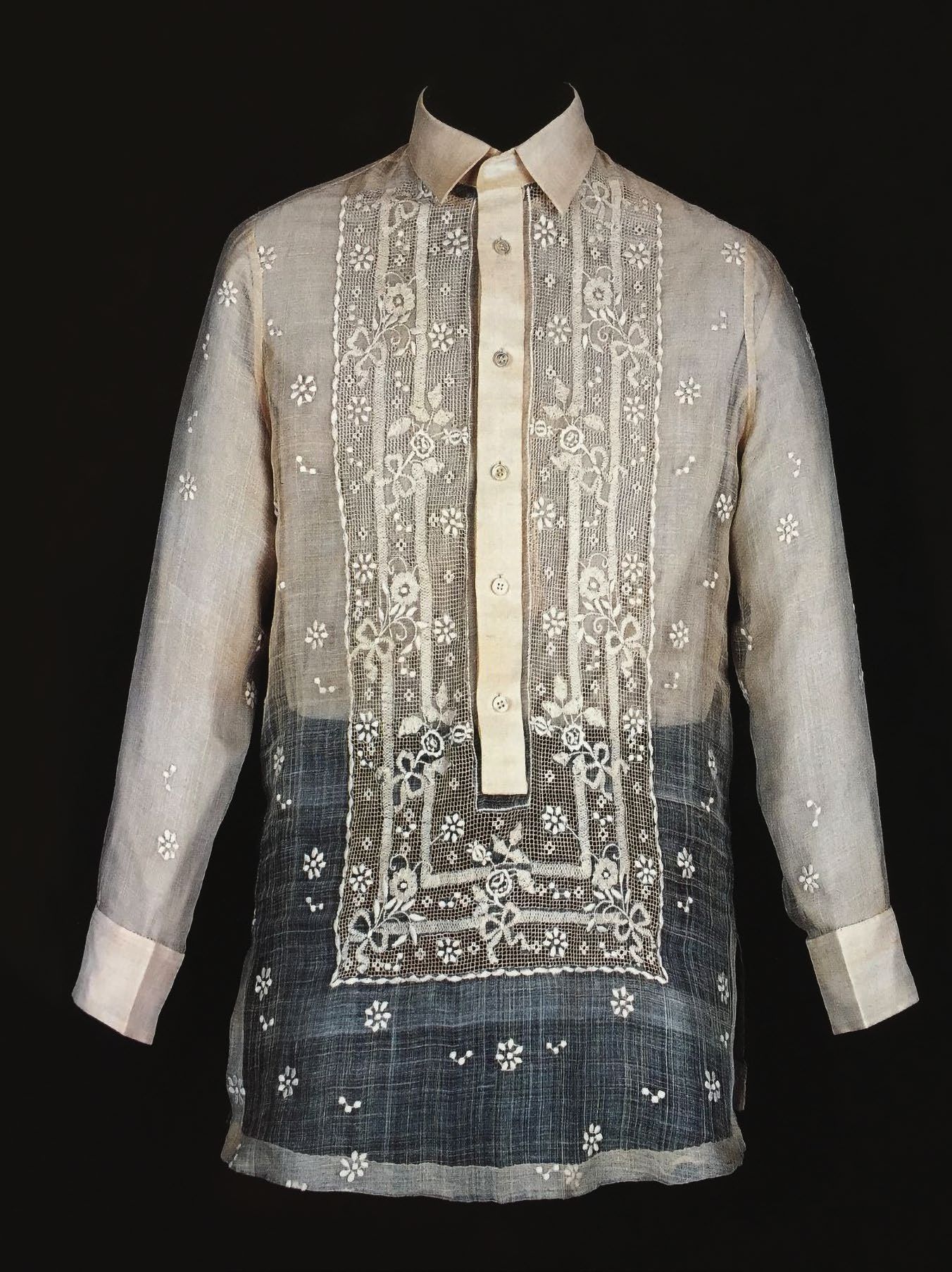Barong Tagalog For Men for Beginners
Table of ContentsThe Only Guide to Formal Barong TagalogNot known Facts About Barong Tagalog StoreWhere To Buy Barong Tagalog Near Me Fundamentals Explained

It is a typical formal or semi-formal attire in Filipino society, and also is put on untucked over an undershirt with belted trousers and dress shoes. Baro't saya is the feminine matching of barong tagalog, with the Maria Clara gown being the official version of the latter. Barong tagalog was additionally recognized as ("outer t shirt") in Philippine Spanish. barong tagalog dress. The term is typically not capitalized.
Rather, the name was coined to distinguish the outfit as native (therefore "tagalog", i. e. ), as opposed to the designs of gown of Europeans as well as various other foreign cultures. Description [edit] Barong tagalog put on with a salakot. The lady is wearing a. Barong tagalog is an official t shirt generally constructed from large light-weight however stiff textile called (typically woven from pia or abac fibers).
The term camisa de chino is additionally used for collar-less and also cuff-less t shirts, named after its resemblance to tee shirts worn by Chinese workers. It is used with belted pants and also outfit footwear. Headwear, when worn, is either a salakot or a buntal hat (and traditionally additionally leading hats or bowler hats). Barong tagalog can differ substantially in terms of style and product made use of, but they share usual characteristics of having long sleeves, needlework, being buttoned (midway or straight down the breast), and also the lack of pockets. They are also put on freely and also have slits on both sides. Historically, the product used for barong tagalog relied on the social course of the user and the formality of the celebration.
How Filipino Barong Tagalog can Save You Time, Stress, and Money.

The quality of the product and the intricacy of the embroidery were typically signs of the standing and also riches of the user. The embroidery of the barong tagalog are frequently placed on a rectangle-shaped section on the front of the upper body (referred to as pechera, "tee shirt front", from Spanish pecho, "upper body"), and/or over the whole shirt (sabog, from Tagalog for "spread"). Read More Here.
They can also have other type of decoration, like alforza (pleats), suksuk (weft drifts), and also hand-painted styles - custom barong tagalog. Sometimes feminized variations are used by ladies, either as an egalitarian or fashion declaration; or as a type of power dressing Recommended Site when put on by women political leaders (such as Corazon Aquino throughout her presidency). History [modify] Pre-colonial era [modify] The barong tagalog originated from the Tagalog baro (literally "t-shirt" or "clothes", likewise called bar or bay in other Philippine languages), a simple collar-less t shirt or jacket with close-fitting lengthy sleeves put on by both males and females in a lot of ethnic teams in the pre-colonial Philippines. These were made from harsh linen-like cloth woven from native abac fiber, or from imported fabrics woven from silk, cotton, and also kapok, to name a few. Amongst Tagalog men, they were commonly coupled with a rectangular shape of highly enhanced towel called the salaual or salawal used knee-length and prepared between (like an Indian or Thai as well as Cambodian ); while in ladies they were coupled with a wraparound skirt called the.
However, in the Visayas, other than similar baro (which had much shorter sleeves) and salaual mixes, males also used colorful robe-like and coat-like versions that might encompass well below the knees (known as the marlota and baquero in Spanish, specifically). These were in some cases belted at the waist. Amongst Tagalogs, red dyes as well as gold trimmings were a sign of being a participant of nobility () or the warrior caste () - find here.

What Does Formal Barong Tagalog Do?
The couturier Jose "Pitoy" Moreno has actually assumed that this transitional design of tee shirt was the camisa de chino of later centuries, which makes it a precursor to the barong tagalog. Depictions of participants of the upper courses (consisting of locals and) in the 18th century showed that they usually put on European-style clothes. go.
These were a lot longer than the modern barong tagalog, reaching to slightly over the knees. They were likewise frequently candy striped with bold colors like blue, red, or eco-friendly. However, they already presented characteristics of the modern barong tagalog, consisting of being made from large nipis product, needlework, long sleeves, and also a loose shape with slits on both sides - this contact form.
Early instances of barong mahaba generally had high-standing collars or even Elizabethan-style ruffs with narrow cravats. Barong mahaba were normally worn with colorful straight-cut pants with stripes, checkers, or plaid-like patterns (generally made from imported cambaya, rayadillo, and guingn materials), top hats (sombrero de copa), and a sort of embroidered velvet or natural leather slip-on footwear referred to as corchos. The large material used by barong mahaba also demanded the using of an underwear, called camisn or camiseta, which was additionally used on its own by commoners. By the 1840s, barong mahaba largely fell out of style. In this duration, it progressed right into the modern-day "classic" barong tagalog, being much shorter with much less ostentatious folded up collars, while still maintaining the large material as well as various other baro attributes.